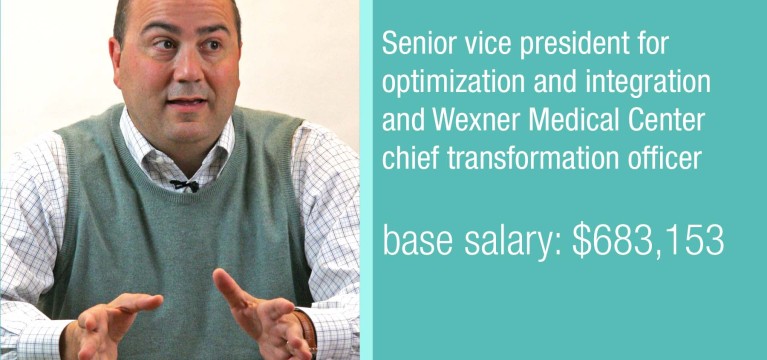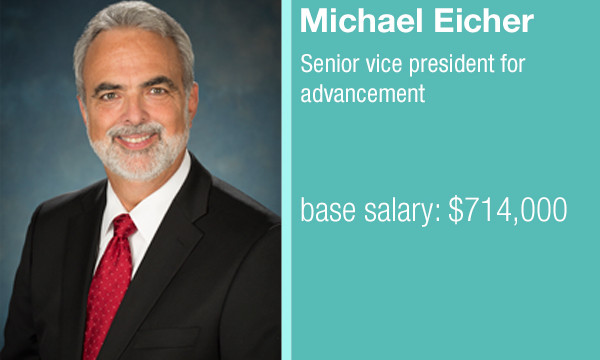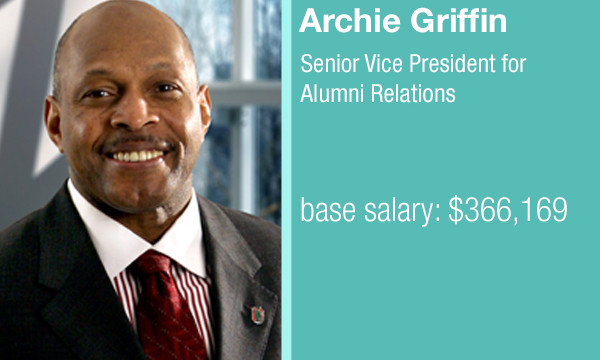Ohio State is in some ways like a ship: the president is the captain, administrators are the crew and students are the passengers, along for the ride. And for a ship the size of OSU, the direction can’t be changed overnight.
The past year at OSU can be considered a turning point. The era of former university President E. Gordon Gee has ended, and the time of Dr. Michael Drake has yet to begin. The ship is veering, preparing for a turn, but it hasn’t quite made it yet.
OSU is in transition, with Interim President Joseph Alutto at the helm.
OSU spent several months over the last academic year searching for its new president, and found that leader in Drake, the current chancellor at the University of California Irvine. While the official changing of the guard won’t take place until July 1, OSU has spent all year preparing for the new president’s arrival.
During this time of transition, public attention has been centered around the announcement of the new president, though university officials have been going through their regular routines. The Lantern has obtained records that detail what exactly what those routines entail — documenting travel expenses and performance reviews of members of OSU’s top administrators over the past two years.
Performance reviews outlined the work that officials have done — and ways others needed to improve. Travel expenses documented millions of dollars spent on trips to conferences, overseas visits and attempts at spreading the OSU brand.
The day-to-day operations of the university have marched on in this period of limbo — keep in mind, Alutto stepped in as interim president before Gee began his second term in office in 2007 — and Alutto, who had announced in November 2012 his intent to retire by the summer, has aimed to keep the parade moving.
“There is no such thing as an interim president, there’s just a president and, so if you look at what we’ve been able to do since I’ve been there, it’s all the things the president would do,” Alutto said in a Feb. 11 interview with The Lantern. “We’ve made tough decisions, we’ve expanded some operations, we’ve made decisions not to go into other areas, we’ve implemented the strategic plan and ultimately that’s what a president winds up doing.”
Keeping forward motion has been the mantra of Alutto’s term in office, which will come to exactly one year when Drake takes over.
In that time, there have been several administrative changes. CEO of the Wexner Medical Center Dr. Steven Gabbe is set to step down in December or sooner if a successor is appointed, as Geoff Chatas, former OSU chief financial officer and senior vice president of business and finance, moved into the role of senior vice president for optimization and integration and Medical Center chief transformation officer as of March 1.
In February, Kris Devine, the OSU vice president for business and finance operations, was named deputy chief financial officer.
In June, Chief Information Officer Kathy Starkoff resigned after five years and a tenure that included a data breach scandal that jeopardized the identities of 760,000 people. Her role was filled in the interim by associate vice president for Distance Education and eLearning Michael Hofherr, who assumed the position on a permanent term in March.
Athletic director Gene Smith was named a vice president in January and given a nearly 12 percent pay increase and a four-year contract extension. Set to report directly to the president, Smith’s base salary is to be $940,484, roughly $140,000 more than Drake’s $800,000, effective July 1, 2013.
Gayle Saunders, assistant vice president of media and public relations, resigned in February after being with the university for roughly a year and a half.
Joseph Steinmetz assumed the position of provost and executive vice president in July, a plan announced in January that hadn’t accounted for Gee’s departure and Alutto’s delayed retirement. He had moved up from the position of executive dean and vice provost for the College of Arts and Sciences, a position that was passed to then-Nebraska dean David Manderscheid, effective July 1, 2013.
Alutto, who makes a salary of $637,508, said in a March 31 interview he considered these changes to be a normal part of university growth.
“It’s a normal activity, one of the characteristics of all organizations is that they self-regenerate over time, and particularly in universities where there are opportunities for administrators and faculty to try new horizons and new opportunities, it’s not at all unusual,” he said. “We haven’t seen an unusual number of turnovers.
“The size of our university is such that, when you’re in a position like mine, you come to expect the turnover that happens,” he continued. “It’s just a natural cycle of deans that move on, other administrators that move on, faculty that move on and I think you become sensitive to that when there is a transition at the top of the university going on at the same time.”
One transition leads to another, and when a university is searching for a new president and has spots to fill, that can send a ripple of changes through its core. Steinmetz, who makes a salary of $461,040, said he considers himself to be an “anchor point” throughout it all, a feat he deemed the most significant thing he’s done as provost.
“I think I can provide that sort of backstop, and that connection between Dr. Gee and Dr. Drake through Dr. Alutto. So I think that I worked hard to perhaps remind my colleagues in Bricker Hall all the time exactly why we’re here, and that is to teach students, do research and our outreach function,” Steinmetz said in an April 1 interview with The Lantern.
“Sometimes universities can get lost thinking about other activities that are going on, but that’s the fundamental reason that we’re here. So that’s been my message since I’ve been there and I think people listen to it, so that’s an accomplishment.”
As part of a series on the OSU administration, The Lantern aims to shed light on exactly what has been going on behind closed doors in Bricker Hall and across campus during this time of transition.
And while overall the fundamental activities of the university haven’t changed, a new captain is set to steer the ship.
This story is the first in a series about Ohio State’s administrators, including travel expenses and performance reviews over the last two years. The series was made possible by the generosity of Ohio State and The Lantern alumna Patty Miller.
A look at some of OSU’s administrators:



















